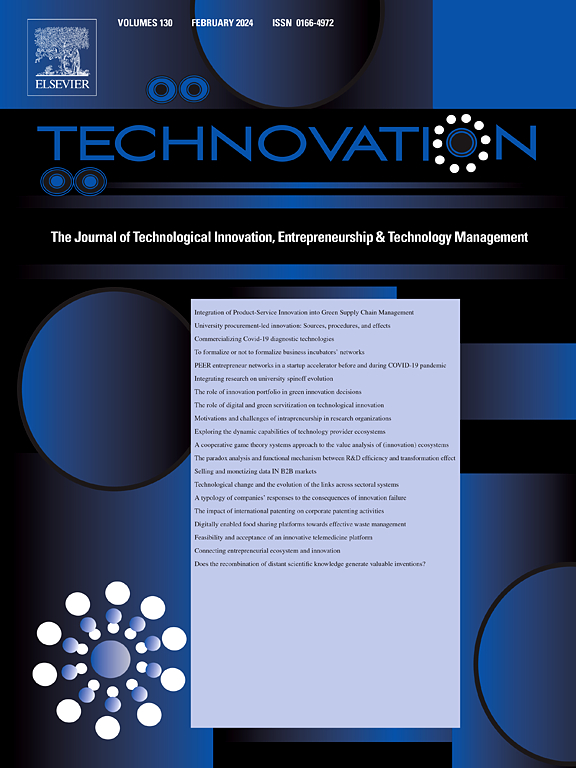面向企业的人工智能、社会5.0和智慧城市适应举措:一种综合方法
IF 10.9
1区 管理学
Q1 ENGINEERING, INDUSTRIAL
引用次数: 0
摘要
人口向城市地区的大规模迁移给城市服务带来了前所未有的挑战。为了解决这些新出现的问题并找到解决方案,决策者必须采用智慧城市和社会5.0范式,全面解决问题的各个方面,并确保适应不断变化的公民需求。这些范例成功的核心是技术,尤其是人工智能(AI)。人工智能的变革性能力使服务扩展、任务自动化、高效运营和处理大量数据成为可能,从而应对城市挑战,与可持续城市和社区(可持续发展目标11)等多个可持续发展目标保持一致。市政当局需要制定战略计划,使其能够适应涉及包括企业在内的多个利益相关者的人工智能、社会5.0和智慧城市范例。考虑到决策问题的主观性和内在复杂性,本研究提出了一个多标准分析系统,旨在支持在这种复杂背景下的决策。该系统的开发涉及具有相关专业知识的关键决策者的投入,利用认知映射等方法以及在中性环境中应用的决策试验和评估实验室技术来分析影响适应举措的因素之间的因果关系。基于建构主义的、面向过程的方法,所开发的分析系统可以帮助决策者在技术集成评估过程中导航不确定性。这一全面而全面的系统促进了人工智能、社会5.0和智慧城市背景下的明智决策,有助于实现相关的可持续发展目标。本文章由计算机程序翻译,如有差异,请以英文原文为准。
Artificial intelligence, society 5.0 and smart city adaptation initiatives for businesses: An integrated approach
The mass migration of human populations to urban areas has resulted in unprecedented challenges for city services. To address and find solutions for these emerging issues, decision-makers must embrace the smart city and Society 5.0 paradigms, which comprehensively tackle various dimensions of the problem and ensure adaptability to evolving citizen needs. Central to the success of these paradigms is technology, particularly artificial intelligence (AI). AI’s transformative capabilities enable the expansion of services, automation of tasks, efficient operationalization and processing vast amounts of data to address urban challenges, aligning with several sustainable development goals (SDGs) such as sustainable cities and communities (SDG 11). Municipalities require strategic plans that empower them to adapt to the AI, Society 5.0 and smart city paradigms, involving multiple stakeholders, including businesses. This study presents a multi-criteria analysis system designed to support decision-making in this complex context, considering the subjective nature and inherent complexity of the decision problem. The system development involved input from key decision-makers with relevant expertise, utilizing methodologies such as cognitive mapping and the decision-making trial and evaluation laboratory technique applied in a neutrosophic environment to analyze cause-and-effect relationships between factors affecting adaptation initiatives. Based on a constructivist, process-oriented approach, the developed analysis system can assist decision-makers in navigating uncertainty during evaluations of technology integration. This holistic and comprehensive system promotes informed decision-making within the AI, Society 5.0 and smart city contexts, contributing to the achievement of relevant SDGs.
求助全文
通过发布文献求助,成功后即可免费获取论文全文。
去求助
来源期刊

Technovation
管理科学-工程:工业
CiteScore
15.10
自引率
11.20%
发文量
208
审稿时长
91 days
期刊介绍:
The interdisciplinary journal Technovation covers various aspects of technological innovation, exploring processes, products, and social impacts. It examines innovation in both process and product realms, including social innovations like regulatory frameworks and non-economic benefits. Topics range from emerging trends and capital for development to managing technology-intensive ventures and innovation in organizations of different sizes. It also discusses organizational structures, investment strategies for science and technology enterprises, and the roles of technological innovators. Additionally, it addresses technology transfer between developing countries and innovation across enterprise, political, and economic systems.
 求助内容:
求助内容: 应助结果提醒方式:
应助结果提醒方式:


